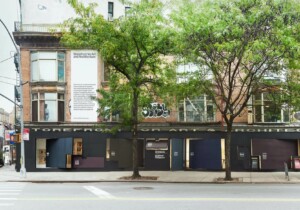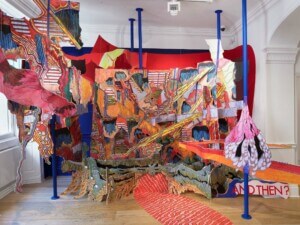The ubiquitous white box gallery is an attempt to construct a valueless neutral space that has become an internalized universal cliché that says “art.” The Storefront for Art and Architecture was designed by Steven Holl and Vito Acconci to be a space physically open to the city and the street that would fight back against to the usual sealed and closed world of the art gallery. But a new exhibition at The Storefront, titled Closed Worlds, takes on the architectural, design, and engineering of closed systems. It creates an exhibit that is itself a closed world of multiple closed worlds. One enters directly off the Kenmare Street sidewalk and enters a space that is expansive and claustrophobic at the same time.
Its creator and curator Lydia Kallipoliti, along with an impressive research group that includes exhibit designer Natasha Jen from Pentagram, have created an exhibition that highlights 41 historical prototypes of closed worlds and weaves their integration into the reality of today’s daily life. In fact, despite the open façade of the Storefront, the exhibition is almost claustrophobic.
Take, for example, the 1976 New Alchemy Institute’s “Ark for Cape Cod.” Fearing an imminent ecological collapse and famine due to run away capitalism, the group designed an interior environment to support a small colony of people. Its design, once only seen in journals like the Whole Earth catalogue, can now be found in quiet, rural Northern California, Vermont, and the survivalist compounds in Eastern Oregon.
The exhibition also features Some World Games, a virtual reality ecosystem by Farzin Farzin that serves as a contemporary 42nd prototype. The project was selected as the winner of Storefront’s Closed Worlds Competition. Closed Worlds is one of the most thoughtful and challenging exhibitions in recent memory of the Storefront and worth leaving the sidewalk. It closes on April 9.










